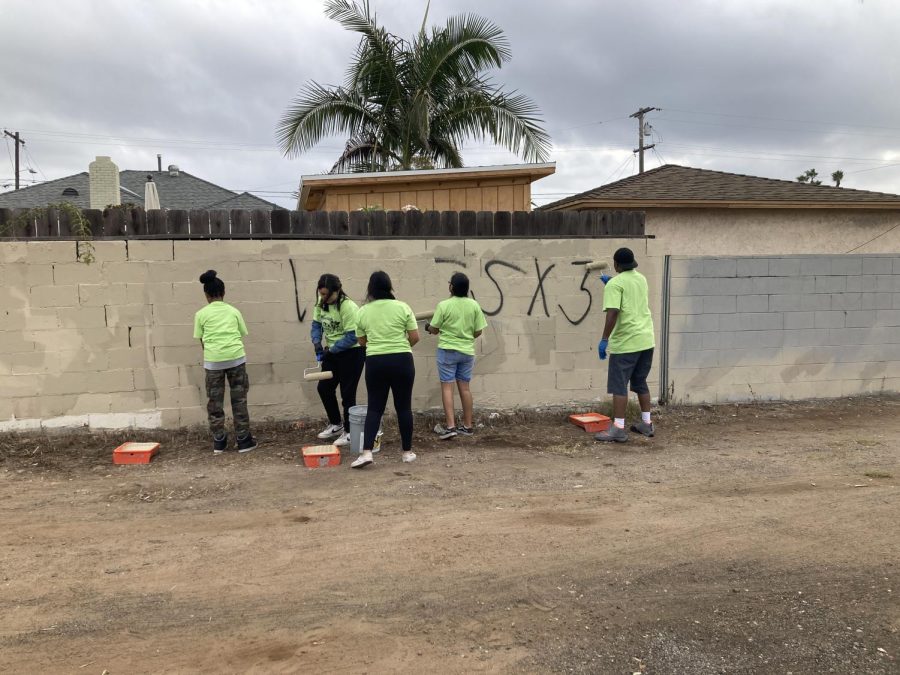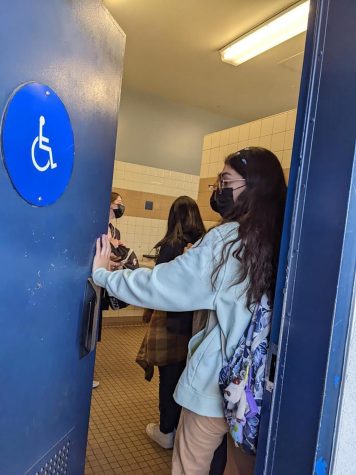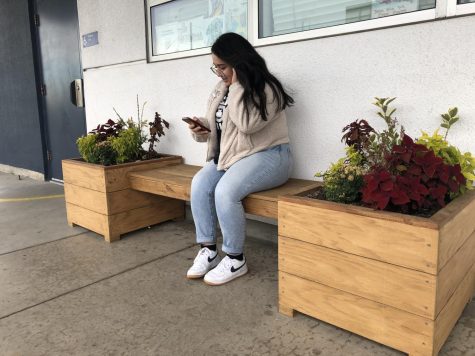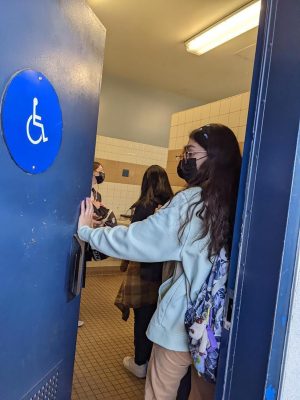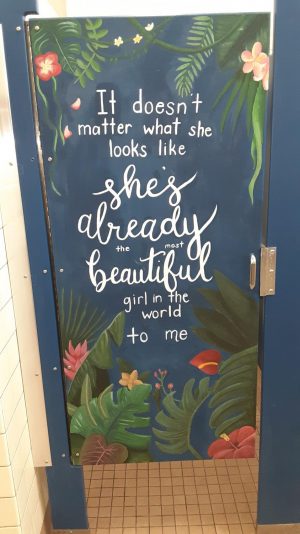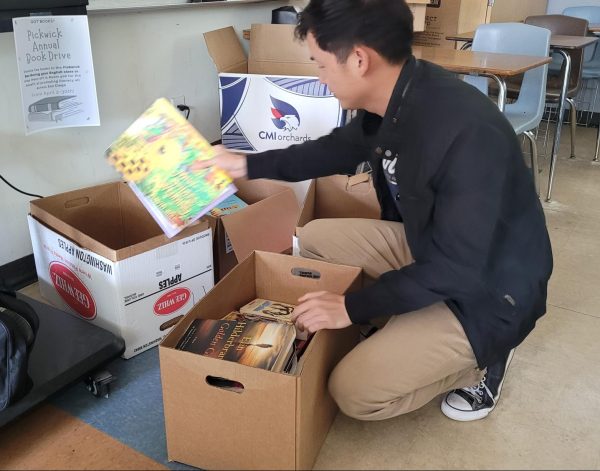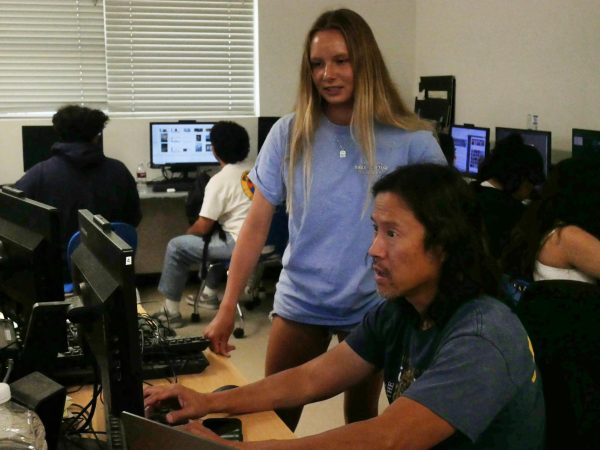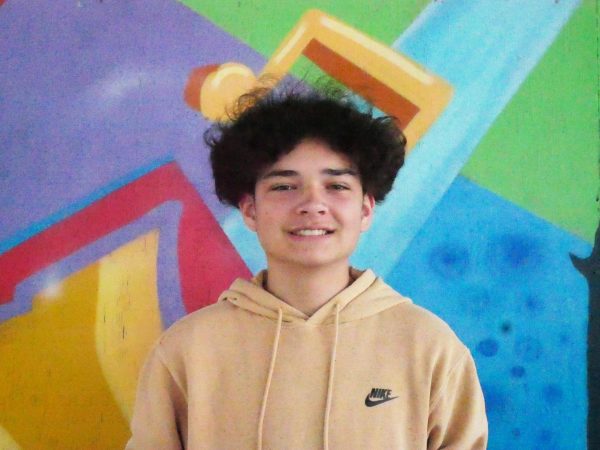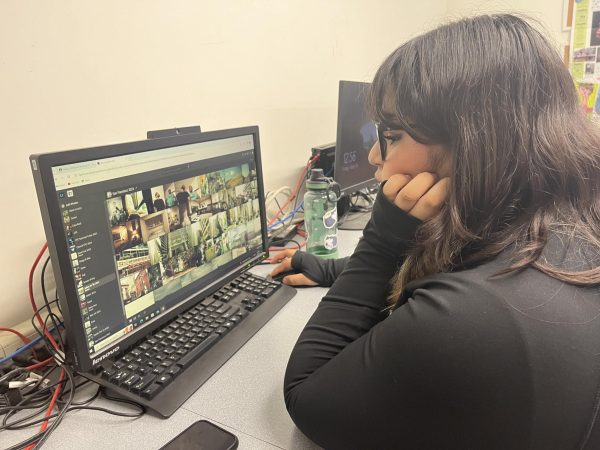Eye sore no more
19th annual Beautify Chula Vista
Castle Park student volunteers paint over Grafitti as part of their efforts to beautify Chula Vista in problem areas where pollution, littering and defacing is common.
Chula Vista has had a long battle against littering since this event’s foundation. The problem is a complex and multi-layered one, due to the multiple sources of pollution. It is harmful considering that Chula Vista was given a status as a coastal city with storm drains that lead to the ocean. Given his title of Environmental Services Manager, Manuel Medrano’s position in the city government, pollution is one of their biggest issues he tries to tackle, he has been working with Beautify Chula Vista since its inception.
“When it [litter] gets washed into our storm drains and gets washed into our oceans, that’s when you hear about ocean life being affected by plastics. It’s usually because there’s a lot of litter on the ground that’s basically being washed into our oceans. So we’re trying to prevent that from happening. That’s not the main reason we’re doing this, the biggest thing is we want to keep our city beautiful as the name implies ‘Chula Vista’,” said Medrano.
Much of the pollution is concentrated in what are called “problem areas”, which are areas that require high maintenance and are difficult for the city’s clean-up crews to manage. According to the event organizer and Senior Recycling Specialist Victor Sanchez, one of the priorities in this event was to get to the problem areas.
“I think we can get to some problem areas that city crews have not been able to get to. Of course they can’t be everywhere. This is a big city, but having these volunteers getting to these areas can definitely clean up some nice areas in the city of Chula Vista,” said Sanchez.
While they appreciate all the extra help from volunteers, Sanchez and Medrano emphasize that picking up after oneself and cleaning up after others should occur more frequently. Sanchez further says that to keep Chula Vista beautiful year round, it is up to the community to make individual decisions on cleaning up by everyone doing their individual part.
“Although it is a beautiful event to have one time per year, the volunteers that come I think are the ones picking up trash every day [and] it’s beautifying Chula Vista. I think it spreads awareness that we have the power as residents to go out and clean our community and not need someone to push us to do it,” Sanchez said.
The solutions are as multifaceted as the problems with suggestions ranging from more city clean-up crews, to increasing trash cans around the city. However, implementing changes to prevent littering amongst the population takes time, as people have to show their commitment to fixing the issue. Sanchez mentions that technology plays an important role in keeping citizens accountable for their actions.
“It’s [the pollution is] minimized and I think technology has helped us remedy it a little bit. People have cell phones taking pictures and video making them aware of the city and people dumping trash. I encourage any resident to record the stuff you see and people you see doing it,” Sanchez said.
There were a number of high school volunteers like Castle Park senior Jordan Pickeny. He agrees that this issue can be reduced through the use of technology, especially given this generation’s youth access to the internet and resources. The problems are identified quicker and can also be remedied quicker thanks to the public knowing this information and calling for change.
“We can raise awareness by posting and sharing publicly on social media and showing how I can make an impact as well as others who notice it as well but do not know how to reach out,” ] Pickeny said.

I am a senior at Bonita Vista High and this is my first year as a staff member of the Crusader. I am excited to be one of this year’s Sports Editor....

